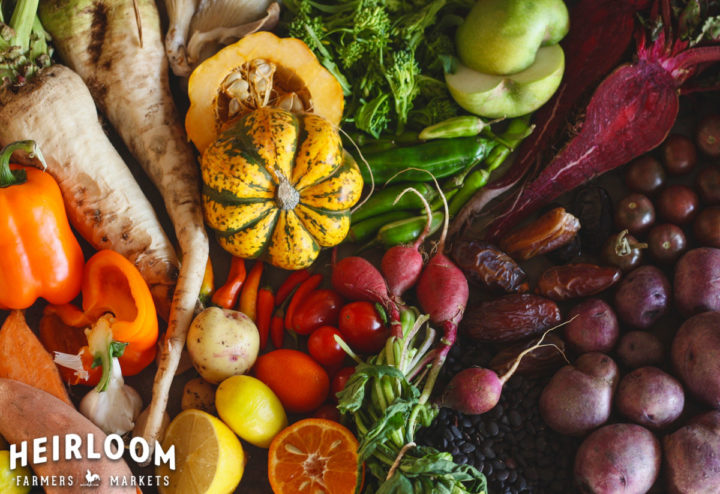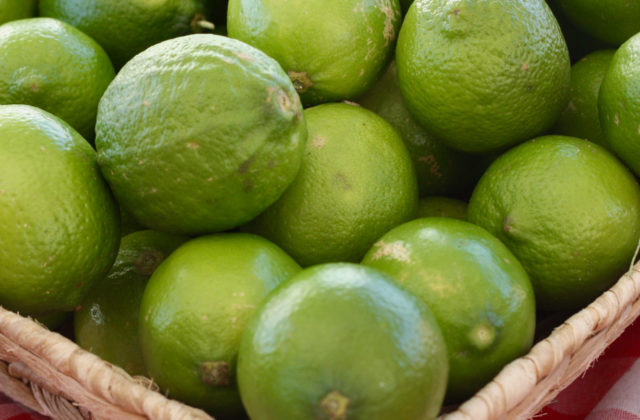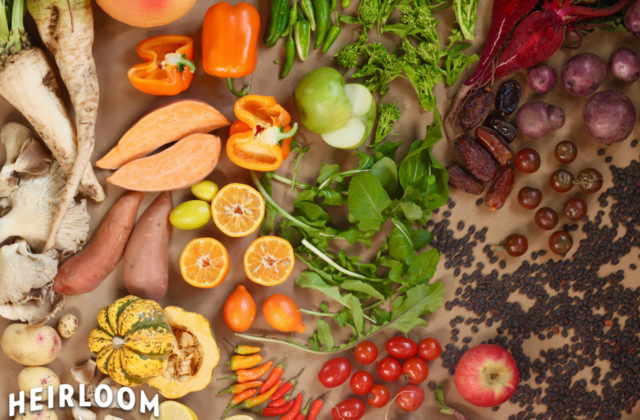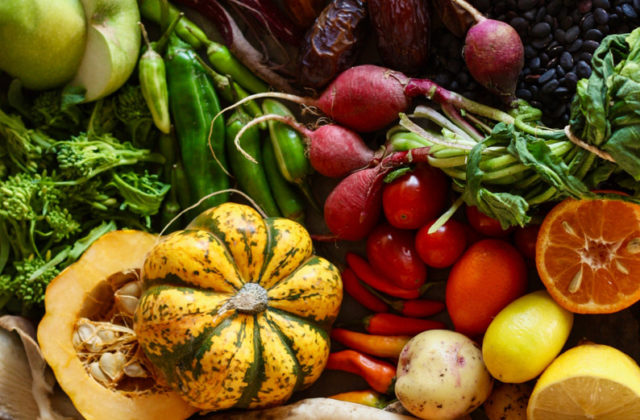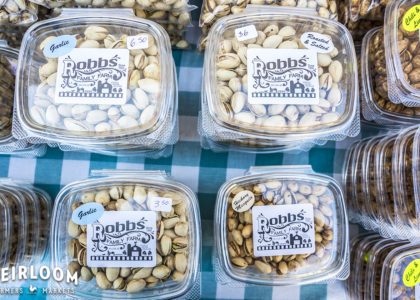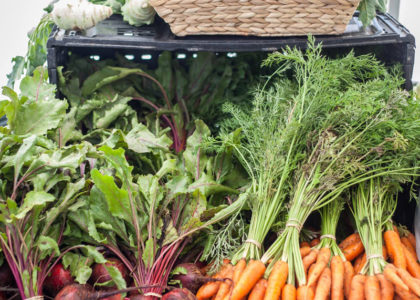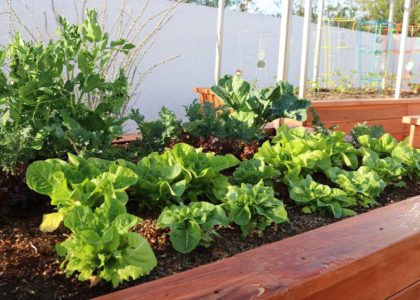Farm to Table Report – JAN/FEB 2019
Contents
• New Year Renewal • Citrus Jubilee
• Eat The Rainbow • Winter Gardening Tips • Seasonal Recipe
New Year Renewal
Early January is a great time to think about your goals and set resolutions for the year ahead. Shopping at your local farmers market can be an integral part of accomplishing these goals – in 2019, Heirloom Farmers Markets customers will eat more vegetables, better support their local economy, and have more opportunities to cook with unique produce than those who shop at traditional supermarkets.
Supporting local farmers and food producers at the farmers market also helps other community members accomplish their goals. Choosing to buy locally grown produce will allow local farmers to grow more good food and get paid a living wage; cooking with food grown without pesticides or herbicides will help to create a safer planet; and using pasture-raised eggs and meat will support sustainable, local farming instead of resource-depleting factory farming. Week after week, supporting your neighborhood farmers markets will help you and your community accomplish resolutions, vote with your dollars, and eat wonderful food.
With all of the healthy fruits and vegetables that our farmers grow this time of the year, it’s easy to incorporate local food into your meals. Whereas snow-blanketed parts of the United States rely on greenhouse-grown vegetables and stored root vegetables in the wintertime, the farms in southern Arizona are teeming with crops that beckon even the most vegetable-adverse. To prepare for the new year, Kathy and Alan Robbs of Robbs Family Farm take time to think about their nutritional goals and plan their planting season accordingly. You can accomplish your own nutritional goals with the help of farmers like the Robbs and the locally grown produce you’ll find at any of the five Heirloom Farmers Markets.
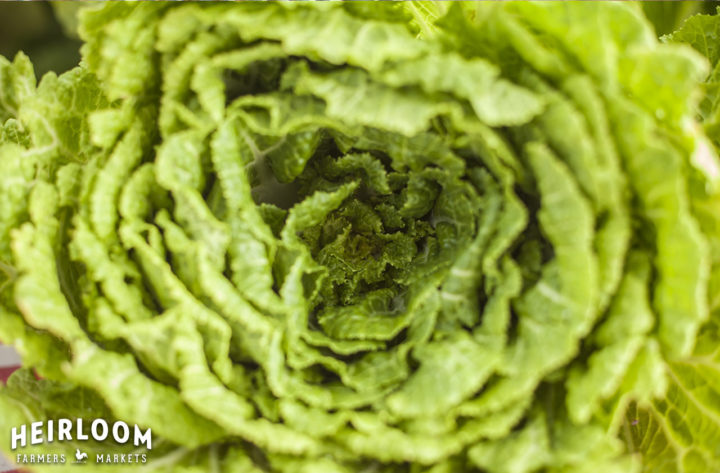
January and February bring colder temperatures to Tucson and the cities surrounding it, which means that winter greens, citrus, and root vegetables are thriving. “Sleeping Frog Farms will have a lot more greens coming up,” says farmer Laurel Goslin, and she isn’t kidding. Farmers market customers can expect to find Napa cabbage, curly and dino kale, chard, spinach, lettuce, arugula, tatsoi, and mizuna at their booth this winter.
While this abundance of winter greens can feel overwhelming to those who have little experience using them, a few simple tricks will help you incorporate these nutrient-packed vegetables into every meal you eat. Start by washing and properly storing your greens as soon as you get home, which will make them easier to cook with on busy weeknights. Fill a sink or large bowl with cold water, plunge the greens beneath the surface, and swish them back and forth until any dirt or grit has fallen to the bottom. Then, remove the greens from the water and lay them out to dry on a clean dish towel. Once the greens are dry, simply roll them up in a dry dish towel and store them in the refrigerator until they’re ready to be used. This will keep your greens fresh and crisp for up to a week.
If you live by the motto “just add greens” this time of the year, you’ll have little trouble using the giant leaves of Swiss chard that look so alluring at the farmers market. Add a few handfuls of chard, kale, and collards to your soups; make a mizuna or arugula salad with every meal; and pan fry that giant head of Napa cabbage with garlic and soy sauce for a quick and delicious stir fry. Adding greens to everything you make is great for making room in your veggie drawer and filling your body with healthy food.
Whether you’re a longtime farmers market customer or a newcomer, thank you for investing your time, money, and efforts into local and sustainable agriculture. As you take time to set goals and resolutions for 2019, we hope you’ll consider how your local farmers market can help you to accomplish them. Happy New Year!
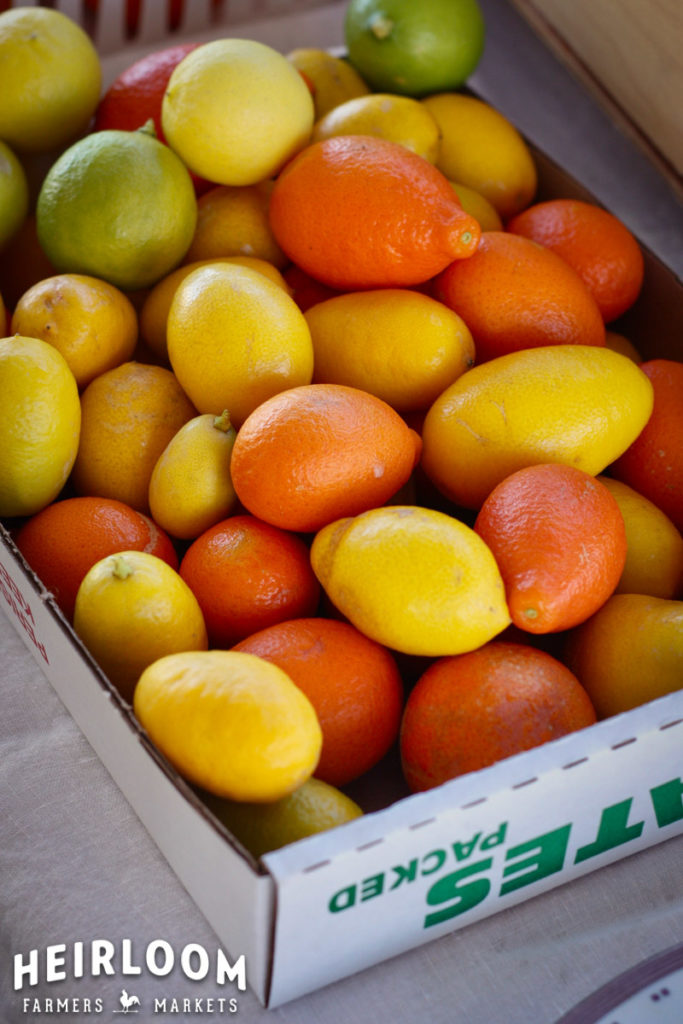 Citrus Jubilee
Citrus Jubilee
Alongside wintergreens and root vegetables like turnips and radishes, Arizona-grown citrus will fill farmers market booths this winter. The bright colors, zippy flavors, and natural vitamins packed into these lemons, oranges, and grapefruits can help you feel refreshed and renewed in the new year. This year, Heirloom Farmers Markets is teaming up with local farmers and food producers at the to help you celebrate everything that is wonderful about locally grown citrus. The Citrus Jubilee at the Farmers Markets, which spans the course of a long weekend and four different Heirloom Farmers Markets, from January 23 until January 27 is a great way to experience Arizona-grown citrus at its finest.
“I get so excited about citrus … I use lemon on basically everything,” says Laurel Goslin, farmer at Sleeping Frog Farms. Although their farm in Cascabel gets too cold to grow citrus, Sleeping Frog Farms has partnered with growers near Tucson and Aravaipa to offer organically grown pink grapefruit, Meyer and Lisbon lemons, limes, and tangerines. The same can be said of Robbs Family Farm in Willcox, which experiences freezing temperatures in the winter. The Robbs will be selling a friend’s organically grown Meyer lemons, which are sweeter and less acidic than most lemon varieties. “So much deliciousness in a bright, beautiful package. Don’t they make you smile?” Kathy says, referring to the juicy, smooth-skinned Meyer lemons.
For a taste of those citrus varieties that rarely make it to conventional grocery stores, look no further than Desert Treasures. The trees in their long-standing citrus grove produce everything from mildly sweet daney oranges to cocktail grapefruits – the sweet flavor of which is pleasantly reminiscent of cocktail juice. Some of the cuter things you’ll find at the farmers market this winter (aside from the adorable dogs walking around) are Desert Treasures’ mandarinquats. These tart mandarin-kumquat hybrids look like small, elongated mandarins and have skin so thin you can bite right through it. Those with a penchant for puckering can enjoy them whole, but most will be better off squeezing them into tea, water, or over a green salad.
Desert Treasures will also sell blood oranges, Arizona sweets, and lemons at Citrus Jubilee this year. “Most lemons are cheaper at the farmers market than they are at the grocery store right now,” says Chris Duggan, who helps operate Desert Treasures. Due to the rising temperatures, water shortages, and encroaching urban development, lemons are being sold for especially high prices at many conventional stores – and they’re undoubtedly less unique and flavorful than those grown right here in Arizona by our own farmers.
Come and celebrate the magic of Arizona citrus at Heirloom Farmers Markets Annual Citrus Jubilee this January. You’ll find a bounty of local citrus from tart to sweet, as well as live music, tangy breads and pastries, citrus jams and jellies, freshly squeezed juice, orange blossom honey, flavored olive oils and vinegars, and citrus-scented soaps. To learn more about the best citrus celebration in Tucson, visit our market info booth and talk to one of our staff members.
EAT THE RAINBOW
Eating the rainbow has nothing to do with sugary candy – in fact, it’s quite the opposite. Eating the rainbow means “eating a variety of colors of fruits and vegetables at as many meals as possible,” says Taste of the Market Program Manager Jackie Mendelson. Eating the rainbow is an easy way to remember to eat a variety of different vegetables, each of which can provide you with different phytonutrients that your body needs.
Eating the rainbow sounds pretty, but is it easy to do? With the help of local growers and the Taste of the Market booth at Heirloom Farmers Markets, the answer is yes! When you visit the farmers market to buy your produce for the week, simply pick a fruit or vegetable from each of the following five color groups: red, yellow/orange, white, green, and purple/blue. When you get home, fill your plate with a rainbow of food that looks almost too good to eat. In the winter, eating the rainbow might look like an arugula salad filled with thinly sliced apples, roasted sweet potatoes, a few purple radishes, and a lemon-tahini dressing. Or, make rainbow soup (aka minestrone) filled with white tepary beans, carrots, purple potatoes, Swiss chard, and tomatoes for a colorful meal that will deliver both nutrients and warmth.
The Taste of the Market booth (sponsored by Arizona Complete Health) at Heirloom Farmers Markets is a great way to acquaint yourself and your family with the idea of eating the rainbow. Throughout the month of January, you can stop by the booth to watch cooking demos and taste samples of the delicious recipes you can make with a colorful array of fruits and vegetables. You can even pick up your very own eat the rainbow shopping list, which categorizes produce by color and helps you figure out exactly what you need to buy to get a variety of phytonutrients in your diet. Fill your plate with the colors of the rainbow and see for yourself the benefits of eating beautiful food.
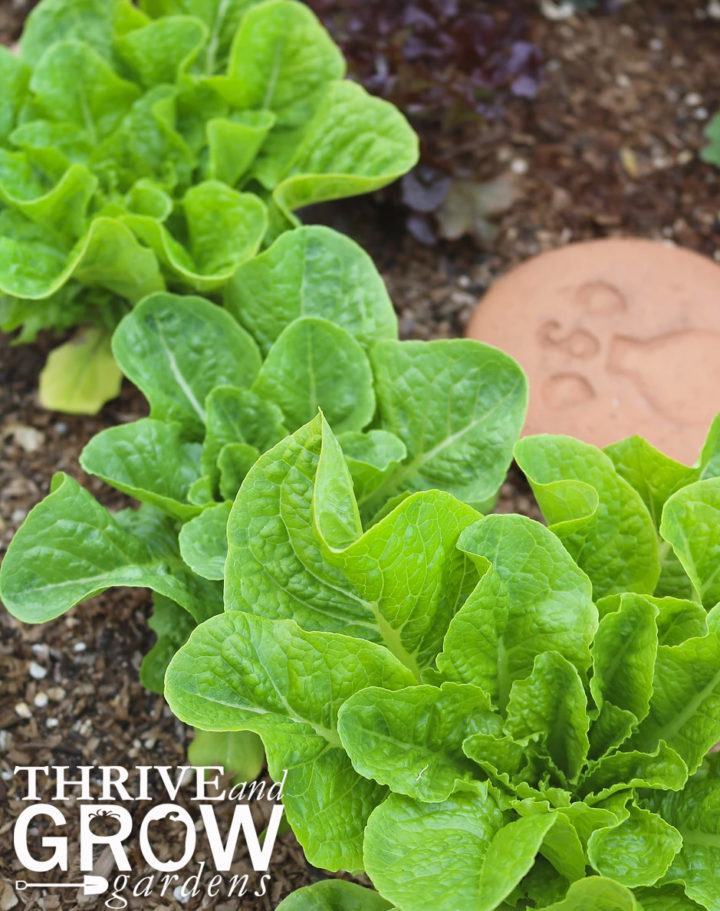 Winter Gardening Tips
Winter Gardening Tips
If all of the wonderful local produce at the farmers market makes you want to grow your own food at home, try planting a small vegetable garden to supplement your weekly produce haul. One of the most wonderful things about going to the farmers market is having access to local growers whose experience growing food in southern Arizona is a great resource for both new and experienced gardeners. Ask any of them gardening advice and their enthusiastic response will likely teach you more than you ever expected to learn.
Michael Ismail is one such example of these helpful local growers. Ismail, who owns Thrive and Grow Gardens and sets up at the Oro Valley Farmers Market and Rillito Park Farmers Market, offers gardening services to help you design, build, and maintain an edible garden at home. With his knowledge of sustainable gardening processes like rainwater harvesting, ollas, and hydroponics, Ismail can teach you about everything from transplanting to soil composition. “January … is [the] time to be planning ahead for the winter season,” Ismail says in his gardening blog post titled “Spring Transplants”. This includes planting warm-season transplants, like tomatoes, which should be planted in the ground in February or March. To learn more about the services, classes, and informational blog posts offered by Thrive and Grow, visit their website at ThriveAndGrowGardens.com. Then, get gardening!
JANUARY/FEBRUARY Recipe
